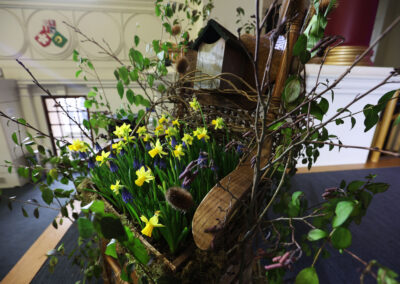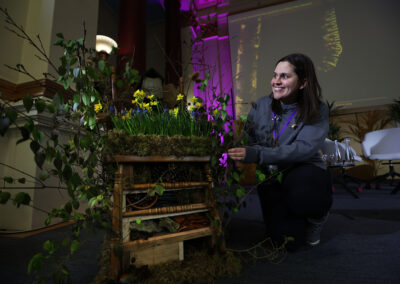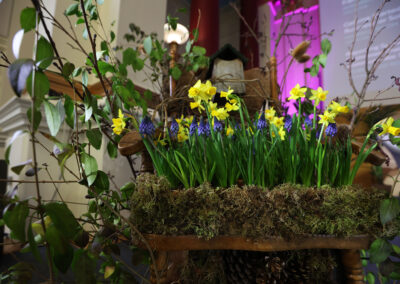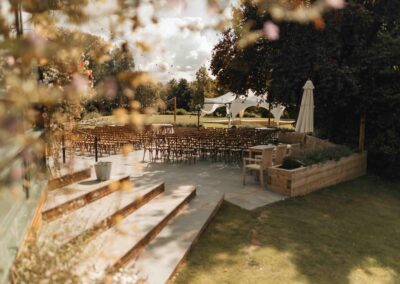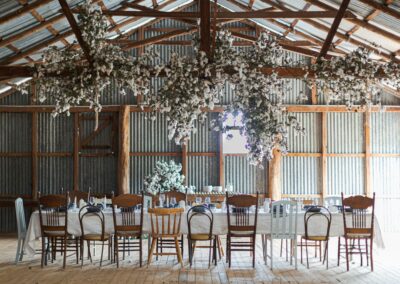The rustle of a wildflower meadow, the buzz of a bee, the vibrant colours of native blooms – these are the natural elements that make a wedding truly special. But behind the scenes, the wedding industry, like many others, can inadvertently impact the biodiversity that makes these moments possible. That’s why at the Sustainable Wedding Summit, we launched the Biodiversity Pledge: a collective commitment to protecting and enhancing nature within our businesses.
Why Biodiversity Matters in the Wedding Industry
Biodiversity, the variety of life on Earth, is essential for a healthy planet. It supports the ecosystems that provide us with clean air, fresh water, and fertile land. In the context of weddings, biodiversity plays a crucial role in creating the beautiful natural settings we cherish. From the flowers in the bouquet to the backdrop of the ceremony, nature enhances the magic of a wedding day.
However, conventional wedding practices can sometimes put pressure on biodiversity. Intensive global flower farming, the use of non-native species, and the creation of large-scale events can disrupt local ecosystems. That’s why it’s vital for wedding businesses to take proactive steps to protect and promote biodiversity.
The Biodiversity Pledge: A Collective Commitment
The Biodiversity Pledge, launched at the Sustainable Wedding Summit, is a call to action for wedding businesses to prioritise nature in their operations. Attendees at the summit, inspired by the insights and expertise of our “Mother Nature” chair, joined us in making this collective commitment. But this pledge isn’t just for those who attended the event – it’s open to any wedding business, anywhere, that wants to make a difference.
Inspired by Mother Nature
Our “Mother Nature” chair shared a wealth of practical examples for incorporating biodiversity into wedding businesses. The chair featured:
A wildlife centre – Providing shelter for a variety of wildlife including a Hedgehog house
- Decaying wood – habitat for wood-boring beetle larvae, fungi, centipedes, and woodlice
- Hollow stems – provide nesting sites for solitary bees
- Stones and tiles – provides cool, damp conditions for amphibians to spend the winter
- Dry leaves – imitates leaf litter and provide homes for invertebrates
- Flowering plants – provides food for butterflies and bees
- Pinecones – provides holes and nooks for ladybirds and lacewings
- Drilled wooden blocks – provides nesting spots for mason bees
- Stone filled dish – drinking station for insects
A living hedge – Providing shelter, boundary and habitat for wildlife
- Wildlife habitat – provides shelter for small animals and birds – teasels are great for small birds like Goldfinches.
- Environmental benefits – help prevent soil erosion, capture pollution, and promote biodiversity
- Natural appearance – enhance the beauty of a garden or property
- Noise and wind barriers – reduce noise and block wind
- Privacy screens – provide privacy for your property
- Cost-effective – save money and maintenance time compared to traditional fences
A bird house – Providing a safe and snug bird house to roost and nest.
Willow bird feeders – Containing fat balls to provide for bird throughout the Winter
Pledges Made at the Summit
The attendees at the Sustainable Wedding Summit made a range of pledges, demonstrating the diverse ways in which wedding businesses can contribute to biodiversity. Here are just a few:
- Build a leaky dam in the stream to slow flow into the river (reducing downstream flood risk), creating a marshier area that is habitat for curlews, a priority species for our area. Harriet Smithson Cumberland Flower Farm
- Hedgerow management and creation: Plant a new hedgerow; lay an existing hedgerow to create a bushy flowering and fruiting habitat corridor for wildlife.
- To continue to plant diverse range of wildflowers and other plants that support pollinating insects and our bees. Rescue and re-home more bees as needed in our local rural area to live in our top field with wild areas and hedgerows. Treseren, Cornwall
- We’ll be planting honeysuckle along a fence on between our office and a neighbouring agricultural barn, to create a pollination pathway between two fields. Alison Hargreaves, Guides for Brides
- We will turn a grass space next to our cottage into a kitchen garden this year, for edible flowers. As part of adding to the pollinator pathway pledge we will add buffet boxes of planting for moths, butterflies and bees 🐝 Emma – The Walled Garden at Beeston Fields
Join the Movement: Take the Pledge Today!
If you weren’t able to join us at the Sustainable Wedding Summit, you can still be part of the movement. We encourage all wedding businesses to take the Biodiversity Pledge and commit to protecting nature within their operations.
How to Take the Pledge:
Complete the pledge form and join our growing community of conscious wedding businesses. All pledges will be added to the Pollinator Pathway map, working alongside our partners at Neal’s Yard Remedies, contributing to a nationwide effort to create vital habitats for pollinators.
By taking the Biodiversity Pledge, you’re not just making a promise to protect nature – you’re also inspiring others to do the same. Together, we can create a wedding industry that celebrates love and supports a thriving planet.
